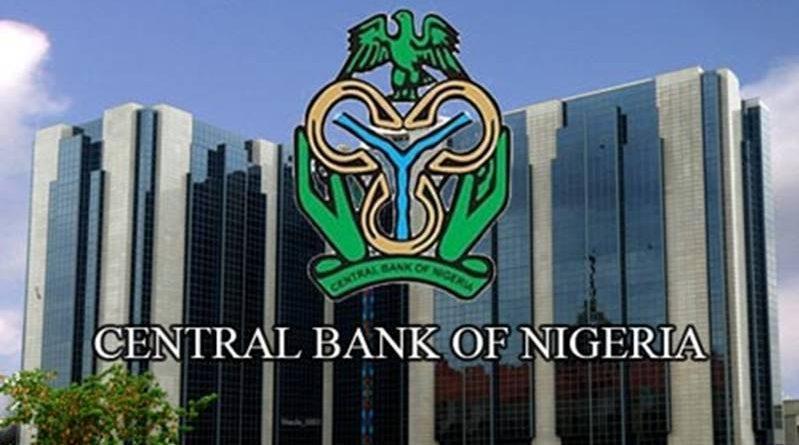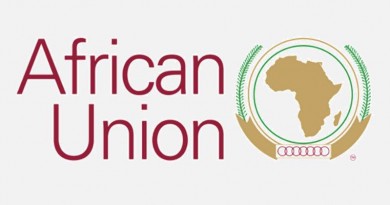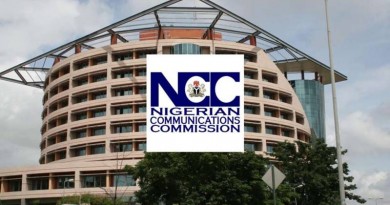CBN retains MPR at 11.5% and the Communique of the Monetary Policy Committee Meeting of March 21, 2022
The Committee thus decided by a majority vote to retain the Monetary Policy Rate (MPR) at 11.5 per cent. In summary, the MPC voted to:
- Retain the MPR at 11.5 per cent;
- Retain the asymmetric corridor of +100/-700 basis points around the MPR;
- Retain the CRR at 27.5 per cent; and
- Retain the Liquidity Ratio at 30 per cent.
The Monetary Policy Committee (MPC) met on 21st March, 2022, in an environment of heightened geopolitical tensions and persisting macroeconomic uncertainties, associated with the recent Russia- Ukraine crisis and headwinds stemming from the lingering impact of the COVID-19 pandemic. The Committee reviewed developments in the global and domestic environments in the first quarter of 2022 and the outlook for the rest of the year. These include the likelihood of tightening external financial conditions associated with monetary policy normalization in the Advanced Economies, the cocktail of sanctions imposed on Russia, global supply chain disruption associated with the invasion of Ukraine, and increasing vulnerabilities associated with the burgeoning global private and public debt portfolio and risks to financial stability. Others include increased uncertainties across major financial markets and the increased risk of continuing rise in prices confronting central banks due to the huge monetary and fiscal stimuli injected into the global economy to subdue the downside risks to growth.
Ten (10) members of the Committee attended this meeting.
Global Economic Developments
The Committee noted with concern, the recent heightening of uncertainties confronting the recovery of the global economy as the Russia-Ukraine conflict and numerous sanctions against Russia, introduced a new dimension of risk to the tepid recovery of the global economy. It further took into cognizance, the lingering headwinds associated with the COVID-19 pandemic and global supply chain constraints; rising inflationary pressure; and more recently, the progression of an interest rate hike by the US Federal Reserve Bank and Bank of England (BOE). Members noted that the ongoing war and the resultant sanctions against Russia will continue to have a considerable impact on the global supply chain as both countries are major players in the global commodities market. With both countries significantly interconnected to the global financial markets, global capital flows are expected to experience some downturn, exacerbated by the increasing sanctions on Russia.
Consequently, the earlier projections by the International Monetary Fund (IMF) for global output growth in 2022 and 2023 of 4.4 and 3.8 per cent, respectively, are likely to be revised downwards due to the overarching downside risks identified on the horizon.
Price development across major Advanced Economies continued to trend upwards and is expected to be accentuated in the short to medium term, reflecting the persisting supply bottlenecks, rising food and energy prices, and the ongoing war which heightened the observed trend. In the Emerging Market and Developing Economies (EMDEs), inflation remained high, with some economies recording
inflation rates well above the average in the Advanced Economies. This was mostly due to a mix of downside risks from the COVID-19 pandemic, capital flow reversals, legacy structural challenges, supply-side bottlenecks, and exchange rate market pressures.
In the global financial markets, investors maintained a substantial portion of their portfolios in gold and other precious metals, as the uncertainty around market securities persists alongside the Pandemic and the emergence of new risks following the imposition of sanctions on Russia. It is still unclear at the moment how the progression with monetary policy normalization by some key Advanced Economies will impact the recovery of the global economy, given the risks associated with this Crisis. Investors are however adopting a cautious approach in view of the impact of these developments on activities in the global markets. Global financial conditions are thus, expected to tighten in the short-term as the investment horizon gradually becomes clearer. This is expected to impact capital flows to emerging market economies as risk-averse portfolio investors adopt a wait-and-see approach. Consequently, the risks to the overall recovery of the global economy remain heightened and call for cautious policy maneuvering to avoid a sharp downturn such as experienced in 2020.
Domestic Economic Developments
According to the National Bureau of Statistics (NBS), Real Gross Domestic Product (GDP) grew by 3.98 per cent (year-on-year) in the fourth quarter of 2021, compared with 4.03 per cent in the third quarter of 2021 and 0.11 per cent in the corresponding period of 2020. On a quarter-on-quarter basis, GDP grew by 9.63 per cent in the fourth quarter of 2021 compared with 11.07 per cent in the preceding quarter. This indicates the fifth consecutive quarter of real output expansion, following the exit from recession in 2020. The positive performance was driven largely by the growth in the non-oil sector to 12.36 per cent in Q4 2021 from 10.99 per cent in Q3 2021. Quarrying, transportation & storage; education; financial & insurance services; information & communication; as well as a steady rebound in manufacturing and mining activities were key to the growth of the non-oil sector.
The Committee, however, noted that although the Manufacturing Purchasing Managers’ Index (PMI), remained above the 50-index points benchmark in February 2022, it moderated slightly to 50.1 index points from 51.4 index points in January 2022. This sustained positive performance in the manufacturing PMI reflects the resilience of the economy in light of persisting headwinds to the recovery. The Non-Manufacturing PMI, however, remained below the 50 index points in February 2022 at 49.0 index points, with a slight moderation compared with 49.01 points in January 2022 as legacy headwinds such as the persisting insecurity and infrastructural constraints continued to impact production and the ease of doing business in Nigeria.
The Committee observed with concern, the marginal increase in headline inflation (year-on-year) to 15.70 per cent in February 2022 from 15.60 per cent in January 2022, a 0.10 percentage point uptick.
This increase was largely attributed to a rise in the core component to 14.01 per cent in February 2022 from 13.87 per cent in January 2022, while food prices moderated marginally. The rise in core inflation was mostly due to rising energy prices as a result of the current scarcity of Premium Motor Spirit (PMS), rise in the cost of Automotive Gas Oil (AGO), and hike in electricity tariff. The Committee, however, expressed cautious optimism, that with sustained interventions by the Bank in various sectors of the economy and broad fiscal support to tame these legacy structural constraints, price development will moderate as output growth improves. The MPC, therefore, urged the fiscal authorities to seek innovative ways of addressing the current critical supply-side challenges confronting the economy, to enable the unhindered transmission of all the recently deployed fiscal and monetary stimulus to the real economy.
Members noted that the growth rate of broad money supply (M3) increased to 2.12 per cent in February 2022, compared with 1. 74 per cent in January 2022. This was largely attributed to an increase in the growth rate of Net Domestic Assets (NDA) to 5.78 per cent in February 2022 from 2.62 per cent in the previous month.
On the developments in the money market, the Committee observed the movement in money market rates around the asymmetric corridor, reflecting the prevailing liquidity conditions in the banking system. Accordingly, the monthly weighted average Open Buyback (OBB) and Inter-bank Call rates decreased to 5.81 and 9.30 per cent in February 2022 from 6.00 and 16.00 per cent in January 2022, respectively. The decrease in the rates reflected the liquidity conditions in the banking system.
The MPC noted the sustained improvements in the equities market in the review period. The All-Share Index (ASI) and Market Capitalization (MC) both increased significantly from 42,716.44 and N22.30 trillion on December 31, 2021, to 47,282.67 and N25.48 trillion on March 18, 2022, respectively. This prevailing positive performance was attributed to gradually improving macroeconomic fundamentals which support improved outcomes and returns on investments from companies quoted on the Nigerian Exchange Limited.
The MPC also noted the continued resilience of the banking system, evidenced by the further moderation of the ratio of Non-Performing Loans (NPLs) to 4.84 per cent in February 2022 from 4.90 per cent in December 2021. The Committee also noted that Liquidity Ratio (LR) remained above its prudential limit at 43.5 per cent in February 2022, while the Capital Adequacy Ratio (CAR), moderated slightly to 14.4 per cent in February 2022 from 14.5 per cent in December 2021. Overall, Members expressed confidence in the Bank’s regulatory regime and commitment to maintaining stability in the banking system, urging the Management to sustain its tight regulatory surveillance.
On the external reserves position, the Committee noted the decrease in the level of gross external reserves to US$39.44 billion as
of March 17, 2022, from US$40.21 billion on January 25, 2022, indicating a decrease of 1.95 per cent during the review period. The moderate accretion to reserves reflects the duality of Nigeria’s position as an oil exporter and importer of refined petroleum products.
The Committee reviewed the performance of the Bank’s various interventions to stimulate productivity in manufacturing, industry, agriculture, energy, infrastructure, healthcare, and micro, small and medium enterprises (MSMEs). Between January and February 2022, the Bank disbursed N29.67 billion under the Anchor Borrowers’ Programme (ABP) for the procurement of inputs and cultivation of maize, rice, and wheat, three crops that hitherto were significant concerns of FX demand. These disbursements bring the total under the programme to over 4.52 million smallholder farmers, cultivating 21 commodities across the country, comes to a total of ₦975.61 billion.
The Nigeria Commodity Exchange (NCX) has also been restructured to effectively aggregate excess outputs from the Bank’s ABP-financed projects, with the objective of moderating food prices. The Bank also released N19.15 billion to finance 5 large-scale agricultural projects under the Commercial Agriculture Credit Scheme (CACS), bringing the total disbursements under the Scheme to ₦735.17 billion for 671 projects in agro-production and agro- processing.
In addition to these, the Bank disbursed the sum of ₦428.31 billion under the ₦1.0 trillion Real Sector Facility to 37 additional projects in the manufacturing, agriculture, and services sectors. The funds sourced from the Real Sector Support Facility – Differentiated Cash Reserve Requirement (RSSF-DCRR), were utilized for both greenfield and brownfield (expansion) projects under the COVID-19 intervention for the Manufacturing Sector (CIMS). Cumulative disbursements under the Real Sector Facility currently stand at ₦1.75 trillion, disbursed to 368 projects across the country. Under the 100 for
100 Policy on Production and Productivity (PPP), the Bank has disbursed the sum of ₦29.51 billion to 31 projects, comprising 16 in manufacturing, 13 in agriculture, and 2 in healthcare.
As part of its effort to support the resilience of the healthcare sector, the Bank also disbursed ₦8.50 billion to 6 healthcare projects under the Healthcare Sector Intervention Facility (HSIF), bringing the cumulative disbursements to ₦116.72 billion for 124 projects, comprising of 31 pharmaceuticals, 56 hospitals, and 37 other services. An additional tranche of N14.7 million was disbursed to 5 researchers under the Healthcare Sector Research and Development (HSRD) Grant.
To support households and businesses affected by the COVID-19 Pandemic, the Bank disbursed N21.66 billion to 19,685 beneficiaries, comprising 12,044 households and 7,641 small businesses under the Targeted Credit Facility (TCF) within the period. The cumulative disbursements under the TCF stood at N390.45 billion to 797,351 beneficiaries, comprising 660,096 households and 137,255 small businesses.
The Bank disbursed ₦11.11 billion to power sector players, under the Nigeria Bulk Electricity Trading Payment Assurance Facility (NBET- PAF), bringing the cumulative disbursements under this facility to
₦1.28 trillion. The sum of ₦12.64 billion was also released to Distribution Companies (DisCos) under the Nigeria Electricity Market Stabilisation Facility – Phase 2 (NEMSF-2). The cumulative disbursement under the NEMSF-2 thus stood at ₦232.93 billion. Both interventions were designed to improve access to capital and ease the development of enabling infrastructure in the Nigeria Electricity Supply Industry.
Outlook
The overall medium-term outlook for the global economy remains uncertain as the war between Russia and Ukraine persists, alongside the ongoing COVID-19 pandemic. The sanctions against Russia are expected to have a considerable backlash against the global economy as Russia is an interconnected economy both in the global commodity and financial markets. The extent of the backlash has, however, not fully crystallized but presents a significant downside risk to the recovery of the global economy if the crisis is not resolved immediately.
Additionally, the COVID-19 pandemic remains a significant downside risk to global recovery as the virus continues to mutate into highly infectious strains. This is imparting a high level of uncertainty on economic agents, thus, creating inhibitions towards making the required investments to set the recovery on a sustainable path. As part of the lifting of restrictions associated with the COVID-19 pandemic, the strong recovery of aggregate demand has continued to pose a strong upside risk to inflation, as supply bottlenecks persist. This has been further aggravated by sanctions imposed on trade with Russia and other blockages associated with supplies from Ukraine.
Consequently, inflation is expected to remain considerably high in the short term, even as some Advanced Economies progress with interest rate lift-off. The rise in both corporate and public debt in the Advanced Economies and Emerging Market and Developing Economies, is also a major threat to global financial stability as the risk of sustainability is heightened in the currently tensed global environment. Capital flows are thus, expected to be restricted as global financial conditions tighten over the short to medium term.
In the domestic economy, available data on key macroeconomic indicators suggest the likelihood of subdued output growth for the Nigerian economy for most of 2022. This is hinged on the dampening impact to the growth of rising energy prices in the domestic economy; tightening external financial conditions as some Advanced Economies pursue interest rate lift-off; as well as the persistence of legacy security and infrastructural problems. It is, however, expected that monetary and fiscal stimuli will remain in place to continue to support the recovery until the downside risks to growth and the upside risks to inflation dissipate substantially. Accordingly, the Nigerian economy is forecast to grow in 2022 by 3.24 per cent (CBN), 4.20 per cent (FGN), and 2.70 per cent (IMF).
The Committee’s Considerations
MPC noted with concern the impact which the global price increase in petroleum and other products is having practically on all economies. The Committee further noted that this has resulted in imported inflation on the Nigerian economy and believes that specific actions need to be taken to ensure that this trend does not continue given the adverse consequences and aggressive rising price level could have on the cost of living and purchasing power of Nigerians.
Before the Russia-Ukraine war, MPC was optimistic that the moderate decline in inflation was sustainable due to the positive impact of good harvest on price levels. The MPC worries that, whereas global prices have gone up, this has been compounded by the shortage of supply of petroleum products. In the short run, MPC urges NNPC to take urgent steps to ensure an adequate supply of petroleum products in Nigeria so as to reduce the rate of arbitrary increase in the price of petroleum products by oil marketers. The Committee noted, with grave concern, the unprecedented rate of oil theft recorded in recent time, and its debilitating impact on government revenue and accretion to reserves.
In the medium-term, MPC is hopeful that the proposed take-off of the Dangote Refinery in the course of the year would help to improve the supply of petroleum products in Nigeria. MPC also notes that the rising price of diesel is compounded by the problem of inadequate electricity supply which has adversely impacted domestic prices. MPC advises the CBN Management and the fiscal authorities to take specific and urgent actions to avoid many power generating stations shutdown for turn-around maintenance, resulting in the current unwarranted shutdown of generating assets.
MPC is relieved that food inflation declined marginally due to good harvest. Although some scarcity is expected as we approach the planting season, the Committee is optimistic that with the high level of strategic grain reserves of the CBN, it is relieved that food prices would remain relatively moderated. MPC further advised Management to redouble its developmental finance initiatives aimed at boosting domestic food output which would help in moderating food inflation going forward, thereby moderating headline inflation.
The Committee’s Decision
While growth has continued to improve, members noted that inflation was confronted with upward pressure due to emerging risks within the domestic and external environment. The MPC, however, noted that the substantial upward push to price levels continued to be influenced by supplyside factors such as the scarcity of PMS, persisting insecurity and backlash from the RussiaUkraine war. These require a careful and focused policy intervention to address and resolve. In this light, the MPC, urged the Bank to continue using the tools at its disposal, while increasing its collaboration with the fiscal authority to ensure that inflation is adequately reined in and growth is returned to a strong and sustainable path.
The Committee also encouraged the Bank to continue the use of its intervention mechanism to deploy funds to output-stimulating and employment-generating sectors of the economy
In its consideration as to whether to hold, tighten, or loosen, MPC remained concerned that the global situation on rising prices may continue in the near term but may begin to moderate if deliberate and urgent actions are taken by both the monetary and fiscal authorities to correct the rising inflation. On another hand, Committee was satisfied that the use of the Bank discretionary CRR policy should be deployed more aggressively to control the level of money supply in the economy.
On tightening in order to rein in the rising price level, MPC was of the view that given the fragile state of the current GDP growth and the potential external and domestic headwinds from the Russia-Ukraine war, a contractionary policy stance would stifle the expected investment expansion needed to drive growth and absorb the shocks in Nigeria.
MPC also feels that not only would tightening reverse the steady improvement recorded in credit expansion, it is also of the view that tightening would not necessarily tame the inflation, particularly where the marginal decline is relatively not yet sustainable.
In the case of whether to loosen, the Committee feels that loosening would trigger further liquidity surfeit and fuel inflationary pressure as available funds outstrip the economy’s absorptive capacity. MPC also feels that loosening would trigger FX demand pressure, as the excess liquidity would exert demand pressure on the FX market and trigger a naira depreciation which would also fuel inflation.
Based on the foregoing, the Committee decided to adopt a hold stance as it would indicate a precautionary and consistent policy stance with the prevailing economic conditions particularly as further economic and financial shocks are exerted from the ongoing Russia-Ukraine war.
On the strength of the above considerations, three members voted to raise MPR by 25-basis points, one member voted to raise MPR by 50-basis points, while six members voted to hold all parameters constant.
The Committee thus decided by a majority vote to retain the Monetary Policy Rate (MPR) at 11.5 per cent.
In summary, the MPC voted to:
- Retain the MPR at 11.5 per cent;
- Retain the asymmetric corridor of +100/-700 basis points around the MPR;
- Retain the CRR at 27.5 per cent; and
- Retain the Liquidity Ratio at 30 per cent.




